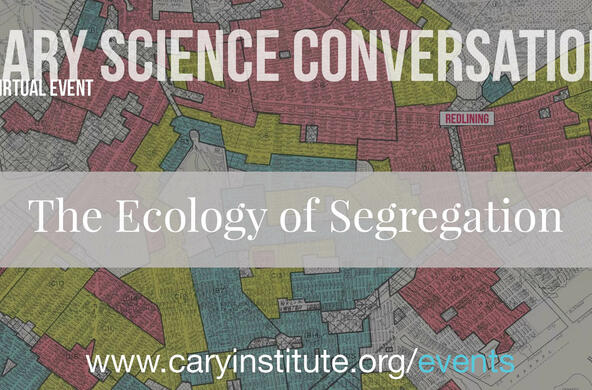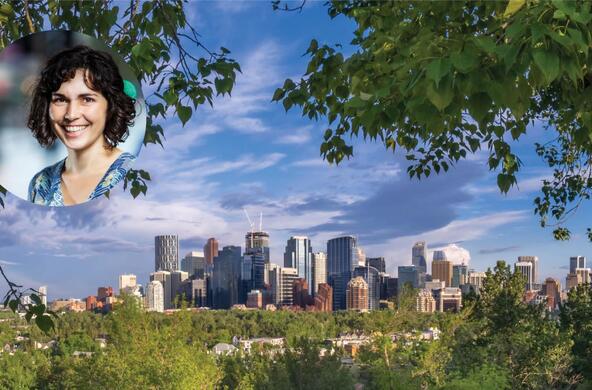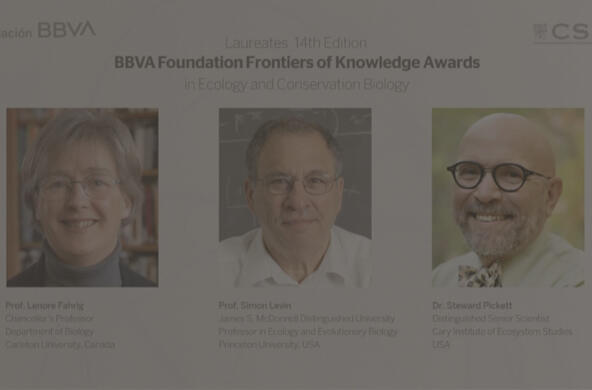"For a long time in environmental science we've done a pretty good job of keeping people outside the box of ecosystems" says Dr. Peter Groffman, who studies the microbial and chemical ecology of urban landscapes and waterways. "We've certainly learned a lot about human impacts on the environments," but "unless we make people part of the system we're not going to really understand ecosystem dynamics."
Dr. Groffman came to the field of urban ecology at an exciting time, joining the Cary Institute of Ecosystem Studies in 1992 and joining forces with Dr.'s Steward Pickett, Mark McDonnell, and Rich Pouyat on long-term urban ecology projects such as the Baltimore Ecosystem Study funded by NSF. He has recently added an appointment as a professor with the City University of New York in their Advanced Science Research Center. Over his career Dr. Groffman has distinguished himself within the field of urban ecology, publishing more than 300 papers on numerous topics, 85 as the primary author, many of which are related to the ecology of urban areas. He is also an engaging speaker on the topics of the ecology of urban areas and the interdisciplinary study of how humans engage with and shape urban ecosystems.
For Dr. Groffman, and others working in the field of urban ecology, human dominated landscapes can't be relegated to a sentence or a paragraph on 'habitat fragmentation' or 'anthropogenic change' in the course of publishing an ecological study. Instead, human dominated ecosystems, they argue, are part of the fabric of the ecosystem as a whole and must be understood using ecological tools and frameworks. This is particularly true as ecological studies have moved from local and regional scales to continental and global scales to address climate change. Humans, after all, have quite a large footprint on the landscape and, "...there's a lot of these [climate] models where the urban areas have been just a blank space," says Groffman.
To illustrate the impact of urban areas on the landscape just look at the lights, Groffman says..the city lights visible from space that is. These lights are a good indicator of the amount of urban area across the landscape. On the east coast of the United States these lights make up between eighteen and twenty-two percent of the land area, relatively evenly spread across the landscape. And, Groffman points out, these areas are all relatively homogenous. In other words, we humans have developed a pattern of urbanization that looks relatively similar in structure in whichever city you look at across the United States. Essentially, every suburb looks the same.
Uncovering the basic truths about how ecosystems function across urban and non-urban areas, and how humans interact with this ecosystem, is what spurs Groffman's interest. "You look at the lights and you realize that, yeah, there's a lot of this [urban land area] and that makes you want to study it, but I think it's also really important that working in these areas is giving us these fundamental advances in environmental sciences."
Urban ecology is not simply an interesting side-project within the field of ecology argues Groffman, urban areas are the laboratory in which ecologists can begin to understand how ecosystems will function in a changing world and what our place in them can be. "There's two real fundamental basic science challenges we're addressing in urban ecosystems," says Groffman, "one is humans as components of ecosystems, the other is the assemblage and evolution of unique ecosystems."
"For a long time ecologists...didn't want to study urban ecosystems because they were like 'what kind of assembly is this?' But now, because of climate change, we have weird assemblages of organisms all over the place...suddenly this idea of strange assemblages is a super hot topic and urban ecosystems is a really good place to study it."
One reason urban ecosystems are an excellent way to understand future ecosystem changes says Groffman is that the novel groupings and interactions of organisms in urban areas have now been studied over the long term with LTER projects in Baltimore and Phoenix as well as studies in other areas. Further, "in terms of dispersal and evolutionary pressures and the emergence of novel climates, all that is happening in urban areas much more rapidly than in the ecosystem as a whole," making them an ideal place to learn how organisms organize themselves in a changed environment.
To do this requires more than the toolkit of ecology, it is an interdisciplinary science. "it's super hard," says Groffman enthusiastically, as if relishing the challenge, "it requires this integration between biophysical and social sciences and I think we're making progress on it." Groffman is excited about the interdisciplinary developments in understanding what drives our homogenous development of urban landscapes. This is, "really exciting work where we've started to make progress on this idea of human perceptions and human values and how does that influence what people do and why and how they are willing to change."
The effect of this research on larger topics, such as informing climate models, is also important. After all, the effects of urban areas have been largely absent from many large scale climate models despite the large land area affected by urbanization. "We're definitely starting to fill that gap," says Groffman, "We're developing the landcover data, we're developing the basic science...then we're adapting the model for what goes on in those areas. So that's an exciting area and I think we're making some progress."
Urban ecology is a deeper well of knowledge than simply filling in gaps in climate models, however, argues Groffman,
"I think the real frontier question is this assembly of novel ecosystems. I think in terms of dispersal community assembly, evolution. And those are really going to really affect the way ecosystems respond to climate change."
His work certainly argues that there are many surprises to be found in studies of urban areas.
Lawns, for example, do not function the way researchers expected them to as Groffman demonstrated in a recent invited poster at AGU 2015. In an 18 year study comparing the biogeochemistry of lawns with that of natural ecosystems and forests Groffman's team found that carbon and nitrogen cycling was much different than expected. "We kind of assumed [lawns] were going to be these kind of biological deserts with real poor environmental performance, and it turns out that's not true. The grass grows, it has a real long growing season, its very productive...so the biological activity and carbon cycling is much higher than we thought and that seems to have a positive effect on the nitrogen cycling."
Urban streams also trap much more nitrogen than researchers expected. Urban streams undergo a common set of geomorphic changes coined the Urban Stream Syndrome, where riparian areas decrease, hydrographs become increasingly variable, and stream channels deepen. These changes all would be expected to increase the amount of nitrogen loading, decrease the storage of nitrogen, and thus increase the nitrogen that exits the stream. Unexpectedly however, urban streams in Baltimore trap close to 70% of the nitrogen, only 20% less than forested streams measured as controls.
All of these interesting findings would not happen without the interdisciplinary network of researchers Groffman has worked with. In particular he credits fellow scientists at the Cary Institute of Ecosystem studies as mentors and important collaborators. "I started working at the Cary Institute in 1992 and there was a small group of people that showed some real intellectual leadership and bravery in urban ecology, in particular Stewart Pickett, Mark McDonell, and Rich Pouyat."
"I give them a tremendous amount of credit," says Groffman, "for making the case that we need to study urban ecosystems, because there's a lot of them, and because [of their] really interesting ecosystems dynamics."
The structure of the Cary Institute, he believes, allowed researchers to take the necessary professional risks to begin asking interesting questions about the ecology of urban areas. As a private non-profit research lab salaries are, in part, payed through guaranteed endowment money. Therefore, researchers are not as beholden to grant makers and have the freedom to ask questions that might be outside the norms of the field.
"It's been a place, because there's hard money support and because they're all research positions, it's allowed people to kind of take intellectual risks. I think the structure of the place has a lot to do with why urban ecology emerged there."
Groffman seems intent on continuing to explore the fruits of this intellectual risk taking as his research in urban ecology continues.





